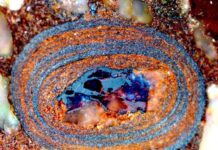One of Nasa’s prime shippers, Orbital ATK, has launched a fresh load of supplies to the International Space Station.
Orbital ATK’s Cygnus spacecraft began its next supply run to the International Space Station Monday, with liftoff aboard an Antares rocket from the Mid-Atlantic Regional Spaceport in Virginia. Launch came at the end of a five-minute window at 04:44 Eastern Time (08:44 UTC).
Monday’s launch begins the tenth flight of Cygnus, one of two US resupply vehicles that service the space station, delivering cargo and equipment to the outpost in low Earth orbit. Monday’s resupply mission is designated OA-9, with the spacecraft named the SS J.R. Thompson. Cygnus will arrive at the ISS on Thursday and is expected to remain berthed at the station until mid-July.
Developed by Orbital Sciences Corporation – which became Orbital ATK following a 2015 merger with Alliant Techsystems – Cygnus can deliver up to 3,750 kilograms (8,270 lb) of pressurized cargo the station. Cygnus was first demonstrated through NASA’s Commercial Orbital Transportation Services (COTS) program, with a September 2013 test flight validating the spacecraft’s performance in orbit and culminating in a successful berthing at the International Space Station. The spacecraft has since conducted eight missions under NASA’s Commercial Resupply Services (CRS) contract – seven of which have been completed successfully.
SpaceX developed their Dragon spacecraft under the COTS program, and also carry out CRS missions for NASA. In 2016 NASA awarded Orbital and SpaceX further contracts under the CRS2 program, while Sierra Nevada Corporation’s Dream Chaser spacecraft was added to the project. Under CRS2, Cygnus will fly a minimum of six missions, of which NASA have already called up two and begun the process to call up a third.
OA-9 is the second of four missions that Orbital ATK were awarded as an extension to their original CRS contract. Orbital were originally awarded eight CRS missions, which was reduced to seven after enhancements to Cygnus and the use of more powerful Atlas rockets for several launches allowed the company to carry the planned amount of cargo in fewer flights. The four extension missions, beginning with last November’s OA-8, bridge the gap to the beginning of CRS2.
Cygnus was designed to leverage existing hardware at the time of its inception. The spacecraft’s service module is based on Orbital ATK’s experience with its GEOStar and LEOStar lines of satellites, while the Pressurised Cargo Module (PCM) was built by Thales Alenia Space as an evolution of the Multi-Purpose Logistics Module (MPLM) that was used by the Space Shuttle to transport cargo to and from the station.
OA-9 will use the Enhanced Cygnus configuration, first flown in 2015, which includes a stretched cargo module and redesigned solar arrays and fuel tanks, increasing the amount of cargo that the spacecraft can carry. An unpressurized version of Cygnus has also been designed, to transport externally-mounted cargo to the ISS. However, NASA has not yet ordered any missions with this version of the spacecraft.
Cygnus normally launches aboard Orbital ATK’s Antares rocket, which was developed alongside Cygnus. The spacecraft is also compatible with United Launch Alliance’s Atlas V rocket, which has been used for three flights – twice while Antares was grounded following an October 2014 launch failure and again last year to leverage the additional payload capacity available when Cygnus flies aboard the more powerful Atlas rocket.
Monday’s launch used Antares, which flies from the Mid-Atlantic Regional Spaceport at Wallops Island, Virginia.
Orbital ATK has established a tradition of naming their Cygnus spacecraft after astronauts who members of their team have known or worked alongside, and who have contributed to the space industry. Breaking with this tradition, the OA-9 Cygnus is named the SS J.R. Thompson after the former Chief Operating Officer of Orbital Sciences Corporation who passed away last November at the age of 81.
James Robert Thompson Jr. was born in South Carolina in March 1936. His aerospace career began at Pratt and Whitney in 1960 after he had spent two years serving in an administrative role with the US Navy, where he held the rank of Lieutenant. Thompson joined NASA’s Marshall Space Flight Center in 1963 and worked as a liquid propulsion systems engineer on the team that developed the J-2 engine. In the 1970s he served as project manager for the development of the Space Shuttle Main Engine (SSME), the RS-25. Thompson served as the director of the Marshall Space Flight Center from September 1986 until July 1989, when he became the Deputy Administrator of NASA.














